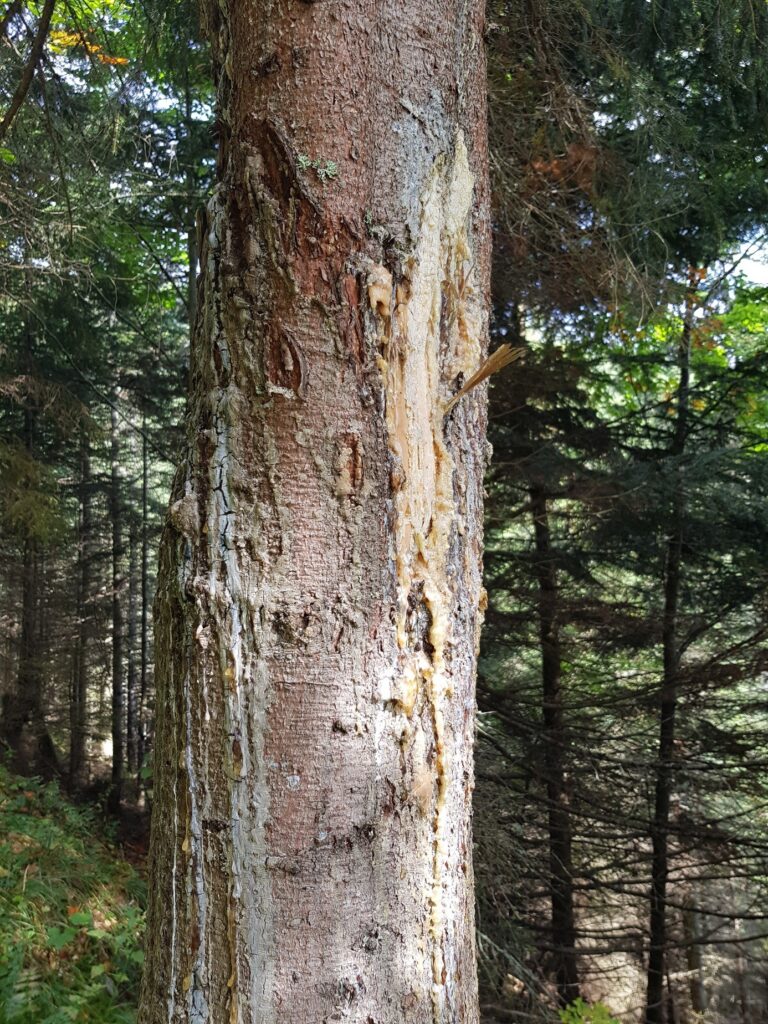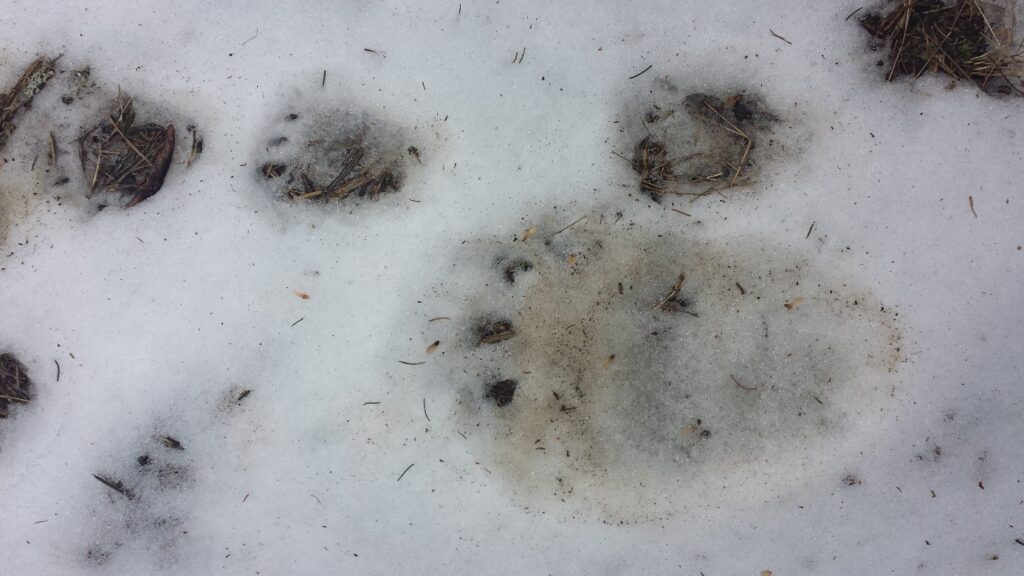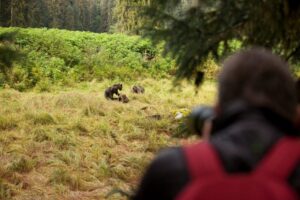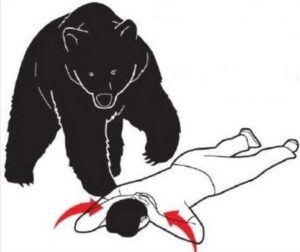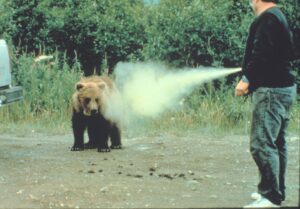How to avoid encounters with bears
Bears usually try to avoid people, but sometimes they may not notice the people. It is therefore important for people to be vigilant in and around the forests, especially in the mornings, evenings and at night, but also during the day, in particular in dense vegetation or in the vicinity of the sources of food. The ability to recognise the signs of a bear’s presence in the area and familiarity with the most common food items eaten by the bears can also help us to avoid unexpected encounters. One should pay attention to traces, droppings and signs of bears feeding when in the woods. It is also important that people are especially alert when moving in dense undergrowth, in places with berries, when there are carcasses present, in conditions of poor visibility or audibility, or when moving against the wind, near watercourses, etc. In cases of limited visibility, being heard (whistling, clapping, louder conversation) will help the bear to notice and avoid an approaching person. The risk of human – bear encounter is lower when you are moving in a group along marked trails and during daylight.
-
Bear Tree – traces of bear bites
Source: Michal Haring
-
Traces of a female bear with a cub.
Source: Michal Haring
To prevent bears from approaching chalets, hotels, tourist facilities, spas, campsites or the built-up areas of municipalities in forested areas, all municipal waste should be stored in a way that prevents bears from accessing it. When hiking, doing sports or camping, all sites should be kept clean and free of attractants. It is advisable to always clean a fire pit area, food containers and utensils immediately after use. When camping, sites located near animal trails, sites with an abundance of bear food and sites where synanthropic individuals can be found should be avoided. Do not cook inside tents or in close proximity to them; do not leave smelly foods (meat products, open cans, etc.) in the vicinity of a tent overnight. Moreover, food scraps should not be left near huts or in the surrounding nature, but should be taken and put in bins for separated waste. Fruit growing near houses should be collected as soon as it is ripe and rotten fruit should be removed as soon as possible.
-
A bear attracted by human food
Source: https://www.grizzlydiscoveryctr.org/education/bear-awareness-hiking-camping/
What to do in case of a human – bear encounter
A bear encounter does not necessarily mean that the bear will attack. Our behaviour can have a significant impact on how the bear will react. Bears in the Polish Carpathian mountains reacted to an encounter by attacking or acting aggressively four-times more often when people were “active” (when they approached the bear to take photos, tried to scare the bear away, etc.) compared to those who were “passive” (people watched the bear, were quiet, retreated). When you encounter a bear unexpectedly (at a distance less than 100 m), it is recommended that you increase the distance between you and the bear, but not by running, which could provoke a chase. Never approach a bear, even if it appears to be calm. Avoid looking directly into the bear’s eyes; for an animal this is a sign of aggression.
-
Photographing bears
Source: https://dailywildlifephoto.nathab.com/photography-guide/3-tips-for-photographing-bears-at-close-range/
-
Posture – Playing dead
Source: https://www.suzavac-argus.com/kako-izbjeci-napad-medvjeda/
Bears signal varying degrees of restlessness or stress. Some signals are subtle – such as pausing the activity, frowning and changing body orientation, or unnatural yawning. Other signals are more obvious – huffing, muttering and clicking of teeth. Very tense displays of aggression include drooling, rapid huffing, growling and grunting with the mouth open, pawing and throaty noises such as roaring.
A bear standing up on its hind legs is trying to get a better view – this is not an aggressive position! A bear acting in self-defence will sometimes charge as a warning for the human to move away. If met with an inappropriate response from the human, the charge may escalate into an attack, but it usually ends before physical contact is made. For example, in 91% of the human-bear encounters reported between 2007 and 2014 an attack did not occur.
If a bear attacks and it seems physical contact will occur, leading experts recommend passive defence: to lie on your stomach, facing the ground, protect your head and neck with your arms and hands, and remain motionless (“play dead”) until the bear leaves. If the bear rolls you over, regain your original position so that your belly and other vital organs are protected. A bear defending itself will usually stop attacking when it realizes you are no longer a threat. Active defence could prolong the attack and increase the risk of serious injury.
A bear pepper spray is considered the best way to fight off an attacking or threatening bear (and thus prevent the injury to humans). Bear spray should be at least 225 g large and should contain 1–2% capsaicin. The spray should provide at least 6 seconds of spray and have a range of at least 7.5 m.
-
Some types of bear sprays
Source: Michal Haring
-
Bear spray use
Source: https://jbrunso1.files.wordpress.com/2014/10/bear_smith83.jpg
A short video describing what to do in case of a bear encounter can be found here.

